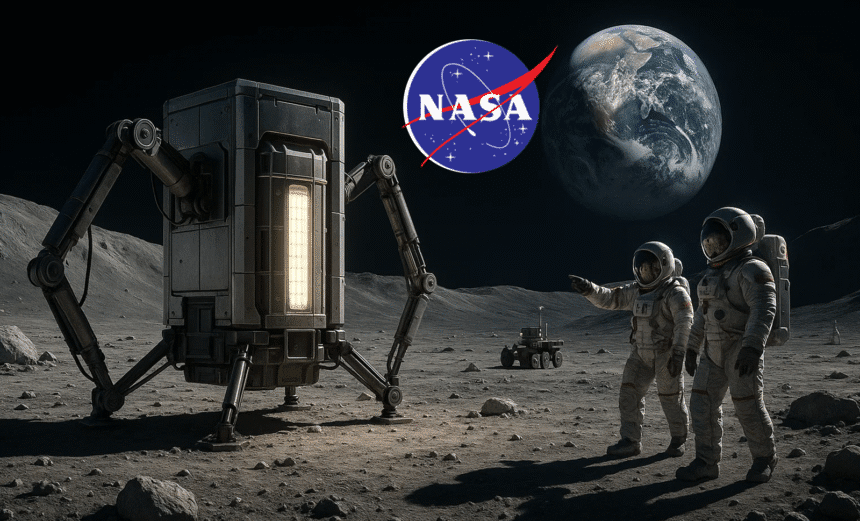NASA has officially announced plans to install a nuclear fission reactor on the Moon by 2030, marking a bold leap toward sustainable space exploration and the long-term human presence on the lunar surface. This pioneering initiative, part of NASA’s Artemis program, aims to overcome one of the most pressing challenges of lunar missions, the need for a constant and reliable power source. Unlike solar panels, which are constrained by the Moon’s 14-day nights and its extreme shadowed regions, nuclear energy promises a consistent supply of electricity regardless of environmental conditions. The planned deployment site is the Moon’s South Pole, a region of strategic importance due to its suspected reserves of water ice and favorable sunlight exposure for other systems.
The U.S. Department of Energy (DOE), in partnership with NASA, has been developing this compact and lightweight nuclear fission reactor to support lunar rovers, scientific equipment, communication systems, and life support technologies. This reactor is expected to generate at least 40 kilowatts of power enough to run 30 average homes continuously for ten years and will be essential for building permanent infrastructure on the Moon. The system is designed to be modular, self-deployable, and resilient to the harsh lunar environment. After finalizing the reactor design by 2026, NASA plans to conduct rigorous testing on Earth, with deployment on the Moon targeted before the decade ends.
NASA’s collaboration with industry giants such as Lockheed Martin, Westinghouse, and IX (a joint venture of Intuitive Machines and X-Energy) is already underway. These companies were awarded contracts in 2022 to develop early prototypes and concepts. Their designs focus on safety, autonomy, compact transportability, and long-term operational reliability. Once delivered to the Moon aboard a robotic lander, the system will autonomously set itself up, reducing the need for human intervention during installation.
The impact of this mission is enormous. A reliable power source will enable astronauts to live and work on the Moon for extended periods, allow for uninterrupted scientific experiments, and even support technologies to mine and process lunar resources such as water ice. Such developments are critical for transforming the Moon into a staging ground for deeper space exploration, including future missions to Mars. Furthermore, NASA sees potential applications of this technology beyond space in remote or disaster-stricken areas on Earth where electricity is unavailable or unreliable.
However, the plan has not gone without scrutiny. The use of nuclear energy in space has long raised safety concerns. Critics argue that a rocket carrying radioactive materials poses risks if an accident occurs during launch. In response, NASA and the DOE stress that the reactor will remain inert during launch and only activate once securely positioned on the Moon. The design will also include multiple layers of shielding and fail-safe systems to minimize any risks. A full environmental and safety assessment is currently being conducted to ensure the project complies with the highest standards of safety and reliability.
Globally, the announcement has sparked interest and competition. Both China and Russia are exploring nuclear energy options for their space programs, and NASA’s project is expected to accelerate global efforts in developing space-based energy technologies. This move positions the United States at the forefront of space innovation and opens possibilities for international collaboration or rivalry in the new era of lunar colonization.
With the Artemis missions set to return astronauts to the Moon, including the first woman and next man, the nuclear reactor project represents more than just a power solution, it’s a symbol of a future where space settlements are no longer science fiction. If successful, the mission could serve as the foundation for building lunar bases, fueling space economies, and bringing humanity one step closer to becoming an interplanetary species.

















